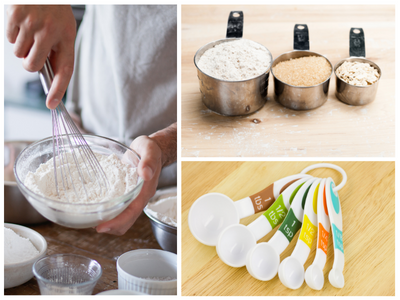Master your measurements to bake up success in the kitchen

If you’ll be baking in your home kitchen this holiday season, why not make the most of it and brush up on your math skills?
Don’t worry, there’s no geometry or calculus involved! We’re talking about culinary conversions – teaspoons to tablespoons, fluid ounces to cups, and other exchanges. When you master kitchen measurements, you’ll be able to quickly scale recipes up or down, make sure portioning is correct, and calculate ingredient amounts to be ordered. Over time, this can translate to better control over inventory and food costs.
If you’re new to conversions, start by keeping a list handy. You can download our Quick Kitchen Conversions printable here! Practice your skills by going through recipes and converting the quantities to alternate measurements. This will help you commit those exchanges to memory.
Once you’ve got a good handle on the numbers, you can test yourself any time you cook! When looking at a recipe’s ingredient list, convert measurements to different ones in your head. For example, if your recipe calls for ½ tablespoon of cinnamon, how many teaspoons is that? (Answer: 1 ½)
Not sure how to do the math? Here is how we arrived at the answer.
½ tablespoon x 3 teaspoons/tablespoon -> ½ x 3 (or 3÷2) = 1 ½
Here are two more step-by-step examples.
1) Convert 2 cups of vegetable oil to fluid ounces.
2 cups vegetable oil x 8 fluid ounces/1 cup = 16 fluid ounces
2) A recipe calls for 4 tablespoons of flour. How many cups is that?
4 tablespoons flour x 1 cup/16 tablespoons = 4/16 = 1/4


